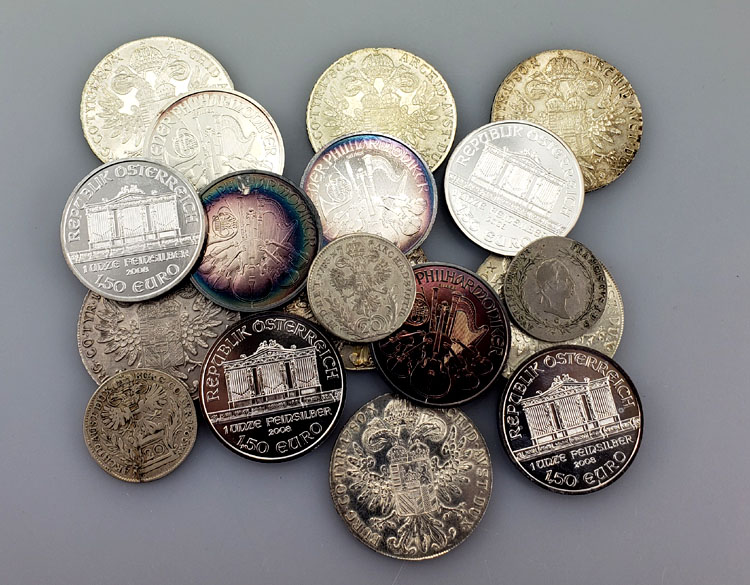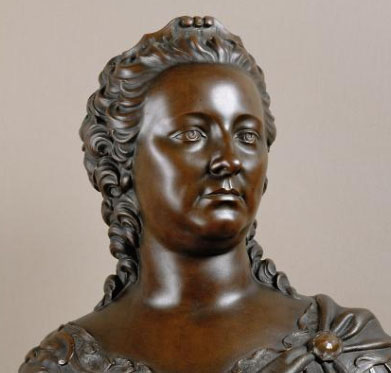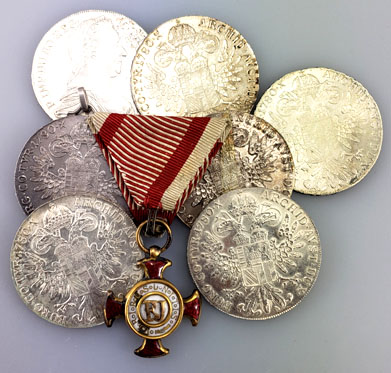

The Austrian mint or “Muenze Oesterreich” is one of the oldest mints in the world and most recognized for its beautiful Vienna Philharmonic coins. It has a fascinating history that dates back to 1192, into Europe’s medieval times. Though so old it’s still running and striking coins for Austria up to this day. As Austria’s only mint and one of the oldest mints in the world it has made itself quite a name, not only in Europe but around the world. The Austrian Mint’s direct competitors are the US Mint and The Royal Canadian Mint as both are also producing very popular bullion coins.
Leopold V, the duke of Austria and King Richard the first (also known as Richard the Lionheart) were both important and influential monarchs in Austria. King Richard I was King of England called the Lionheart because of his history as a warrior and military leader. It is said that Richard insulted the Austrians and Leopold V. As a punishment the duke of Austria imprisoned England’s King, extorting the English by saying he wanted 20t of gold in exchange for Richards’ release. However things were looking bad for Richard the Lionheart when his younger brother John refused to pay the ransom. At the beginning it was actually unlikely for Richard the first to become King at all, he was the third of five children. But miraculously none of his older brothers ever had the intention and will to become king, the only ones in the Royal family willing to take the throne were Richard and John. Since John was the youngest of all five Richard became King and was crowned in September of 1189. Two months before (July) he had been declared Duke of Normandy. So while King Richard was gone, John had actually benefited from his imprisonment. Finally after 14 months Richard the Lionheart was released from his prison in Duernstein. His mother Eleanor of Aquitaine had raised money to free her son.
In 1194 two years after Richards’ release the duke of Austria made the decision what to do with the 20t of silver that he had received from the British. He wanted to strike coins, pfennigs to be exact. To make his plan reality he built a coin mint in “Hoher Markt”. Historians have found evidence that throughout history the mint moved to different locations, from Hoher Markt into the Wollzeile. Then in 1834 Kaiser Franz the first ordered for the mint to be moved into its permanent home in central Vienna. A good decision by 1850 the Austrian mint was the biggest in the entire Austrian empire. Later after the first world war and the fall of the empire, the Austrian mint became the only mint of Austria. The Mint is owned and operated by Austria’s central bank.

The coins at the Austrian mint are made from scratch. The first step in the process from bar to coin is melting the metal so that it can then be poured into plaster models. The metal hardens and the coin is finished. When simple coins are made these steps are done by machines, however when striking more expensive gold or silver coins this process is done by hand.
Some of the most memorable and popular coins that the Austrian mint strikes include the Vienna Philharmonic coin series as well as the Maria Theresa Thaler. The Maria Theresa Thaler dates back to the 1700s when the real Maria Theresa was still alive. Back then she ruled Bohemia, Austria and Hungary, had a lot of political impact and was widely known throughout Europe. Maria Theresa became empress in 1740 Theresa Thaler was first struck a year later. She died in 1780, but the coin itself lived on. In 1857 Francis Joseph of Austria proclaimed the Maria Theresa Thaler to be official currency. However it only stayed an official trading coin for a year, in 1858 Francis Joseph’s declaration was taken back and the Maria Theresa Thaler lost its importance. At least until now, the Austrian mint still strikes this special silver thaler today.


The Vienna Philharmonic coin on the other hand doesn’t date back quite as far, first introduced in 1989 it quickly gained popularity. In 2013 it was awarded third place as the best selling bullion coin in the world. It was originally struck in two different sizes and is available in silver, gold and platinum.
Of course the Austrian mint also strikes simple, everyday coins that go into circulation. Back in the day it was responsible only for striking shilling coins, now it strikes euro coins and collectibles. The Austrian mint also sends coins and planks (plain coins that don’t have a pattern yet) to other countries. The Austrian history, coins and its impact on not only Europe, but the world is remarkable, the special coins it strikes will surely be remembered for a long time.